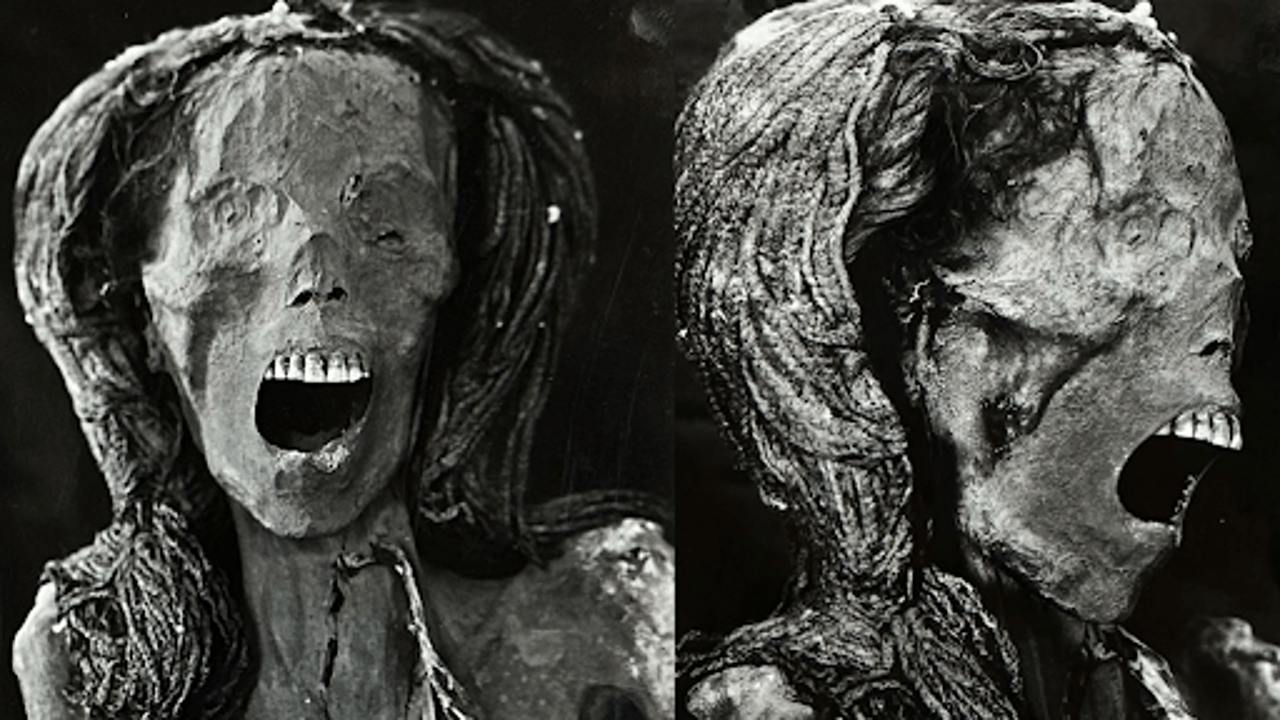
Few Egyptian mummies have been found with their mouths open. A recent study suggests that an ancient Egyptian woman, whose remains were uncovered in the 1930s, might have died in a violent manner. (CNN)
In 1935, archaeologists discovered a mummy in a tomb near Luxor, Egypt, that captivated the world with its eerie, open-mouthed expression. This ancient Egyptian woman, who lived about 3,500 years ago, has continued to fascinate researchers. Recently, scientists have used advanced techniques to delve deeper into the mystery behind her striking appearance.
The new research, published in Frontiers in Medicine, sheds light on various aspects of the mummy’s life and death. By employing CT scans, infrared imaging, and other modern methods, researchers have uncovered detailed information about the woman’s age, health, and the mummification process.
The woman was 48 years old when she passed away. Analysis of her pelvis joint, which changes with age, helped establish this age. Notably, her body was embalmed using frankincense and juniper resin—luxurious and costly materials that were imported from distant regions, according to Sahar Saleem, a radiology professor at Cairo University.
One surprising finding was that the woman’s internal organs were not removed, which is unusual for mummification practices of that time. Typically, embalmers would remove all organs except for the heart, but this mummy retained her brain, diaphragm, heart, lungs, liver, spleen, kidneys, and intestines.
CT scans of the teeth and brain have provided new insights into the mummy's physical features, health issues, and preservation. (CNN)
Researchers found that the woman stood around 5 feet tall and had mild arthritis of the spine, with some missing teeth. Despite these discoveries, the exact cause of her death remains unknown. Saleem highlighted that the high-quality embalming materials and the well-preserved state of the mummy suggest that the open mouth was not due to a careless mummification process.
The "screaming" appearance of the mummy could be due to a rare condition called a cadaveric spasm, which happens when a body’s muscles contract violently after death, possibly indicating she died in agony or pain. Alternatively, her mouth might have remained open because she was mummified quickly after death, within 18 to 36 hours, preserving her expression.
The study also considered other factors that could influence a mummy’s facial expression, such as the decomposition process and the wrapping technique. The true cause of her open mouth remains uncertain, but the research contributes valuable insights into ancient Egyptian mummification practices.
The 'screaming' mummy’s coffin is currently on exhibit at the Metropolitan Museum of Art in New York City. CNN
The mummy, buried beneath the tomb of Senmut—a key architect of Queen Hatschepsut’s temple—was discovered during an expedition led by the Metropolitan Museum of Art. Her coffin is now displayed there, while her body is kept at the Cairo Egyptian Museum.
Previous studies by Saleem on other open-mouthed mummies have provided context for this new research. For instance, the remains of Pentawere, a prince who was executed, showed poor embalming, whereas Princess Meritamun, who likely died of a heart attack, had an open mouth due to postmortem changes.
Randall Thompson, a cardiologist from the University of Missouri–Kansas City, praised the study, noting its importance in understanding ancient health practices and diseases. He emphasized that such research reveals that conditions like heart disease existed long before modern times.















